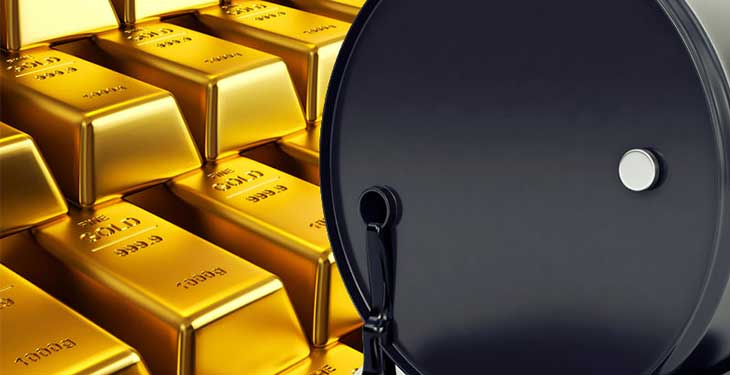Commodities were broadly unchanged for a third consecutive week but plenty of individual action was seen last week.
”We are well into the peak summer vacation month of August where activity – but not necessarily volatility – tends to slow down. Following a strong first half of the year for commodities, gains this quarter (with the exception of metals) have been harder to come by,” according to Saxo Bank’s head of Commodity Strategy, Ole Hansen.
In response to the continued delay of oil markets’ rebalancing, hedge funds have cut bullish commodity bets by 40% during the past six weeks. These developments have left some markets exposed to the risk of contrarian trades triggering renewed strength, not least in oil markets where a record gross-short was seen before the latest recovery.
With this in mind, the Saudi energy minister weighed in to support oil prices saying that large short positioning in the market had caused the oil price to undershoot. His comments sent oil, still reeling from a huge overhang of supply, sharply higher. Saudi Arabia’s rejection of a deal in Doha back in April made the market take note of this verbal about turn. A new deal to support the market is not expected but once again traders will be thinking twice about going aggressively short and that was probably the main goal of the statement.
Gains in energy and the metals helped offset a tough week for soft commodities. This sector has seen continued demand all year resulting in some major positions developing, first in sugar and lately in cotton. Grain markets took a breather ahead of the most important report of summer. The monthly World Agriculture Supply and Demand estimates (WASDE) report will be the first to cast a more accurate light on expected yields and production this season.
Last week, however, belonged to oil, which advanced for a second week by the most since April. A major build up in short positions during June in response to rising inventories of both oil and products had set the stage for a comeback. When it came it was provided by renewed verbal intervention from oil producers, not least the above mentioned comments from the Saudi Arabian energy minister.
Gold may fall
Following two failed attempts to challenge the $1,375/oz high from July 11, gold has started to look exposed and the risk of another correction is lurking.
Demand in response to the continued contraction in global sovereign yields is real and is likely to continue as long central banks continue experimenting with negative rates and massive asset purchase programs. Hedge funds maintain a near record long position in Comex gold and while the underlying support remains, the risk of long liquidation similar to the 33% reduction in May can not be ignored.
Gold has spent the post-Brexit period settling into a new and higher range between $1,315/oz and $1,365/oz.
Crude oil torn as short-term and long-term conflict collides
It was a big week for reports and forecasts as the three major oil institutions of EIA, Opec and IEA all released their monthly views on energy markets.
The EIA continues to see the global oil market being oversupplied deep into 2017. In their update they also raised US average production for 2017 by 100,000 barrels/day to 8.3 million, still some 400,000 b/d below 2016.
Opec also saw the rebalancing of world markets being delayed. Instead of a small average deficit for 2017 in the previous report, it now expects the global oil market will see a 100,000 b/d average surplus.
The IEA was a bit more upbeat on the rebalancing process, despite record Gulf production. Citing Reuters, “oil markets will begin to tighten already during the second half of 2016 but process will be slow and painful as global demand growth declines and non-Opec supplies rebound”.
With this in mind and following the recent selloff back towards $40/b several Opec members once again stepped up support through verbal intervention. A similar approach had already proven successful on a couple of occasions this year but with the focus on oversupply and a surprise weekly rise in US inventories it needed the support from Saudi Arabia’s Energy minister Falih to succeed.
Frustrations about the return to $40/b and increased speculative selling triggered renewed verbal intervention from both weak and strong Opec members.
”We do not see Opec taking any action at this stage but the delay to the process of achieving balance will ensure continued comments from members to prop up the price as we approach September, a month which has yielded negative oil returns for the past five years.
We maintain our Q3 call for Brent crude to trade mostly within a $45-50/b range. An end-of-year price much higher than $50/b will be hard to achieve with the additional price recovery likely having been delayed well into 2017,” Hansen concludes.
